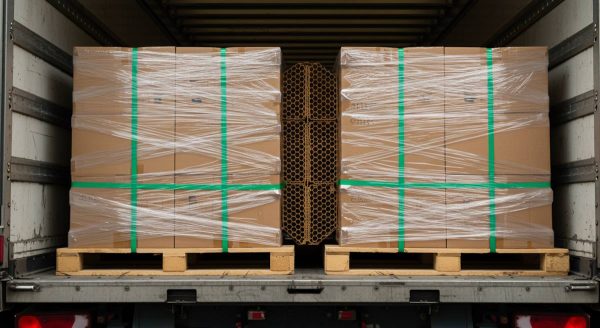Transporting fragile cargo safely is an essential aspect of the trucking industry. The protection of goods during transit is not just about maintaining the integrity of the products but also about preserving the relationships between logistics companies and their clients. Ensuring that fragile goods are shielded from damage reinforces trust, reduces losses, and is crucial for the economic stability of businesses involved in these operations.
In this article, we are going to present you with the imperative need for robust methods to safeguard delicate shipments and explore the best practices that can be employed in the trucking sector to ensure the safe transportation of fragile cargo.
Understanding fragile cargo
Fragile cargo refers to items that are susceptible to damage under common transportation conditions due to their delicate nature. Common types of fragile goods include glassware, electronics, ceramics, and more. These items require special attention during shipping to avoid breakage or degradation. The economic implications of damaged fragile goods can be severe, often resulting in financial losses, damage to brand reputation, and strained business relationships.
When fragile items are damaged, businesses may face additional costs for replacements, shipping, and dealing with customer dissatisfaction. Thus, it is critical for logistics providers to employ the most effective methods to transport these goods securely.
Best practices for transporting fragile cargo
Packaging techniques for fragile goods
Packaging is the first line of defence in protecting fragile cargo. Proper packaging techniques are crucial to absorb shocks and prevent damages during transit. Key materials and methods include using bubble wrap, foam, and corrugated void fillers. These materials cushion the items and limit their movement within the shipping container.

How can proper packaging prevent cargo damage?
Different packaging materials offer varying degrees of protection. Bubble wrap is often used due to its cushioning effect, while foam can be customized to fit the unique shapes of items. Corrugated void fillers, in particular, help fill gaps in shipping boxes, preventing items from shifting during transport. In Spain, where the climate can vary greatly, considering temperature and humidity in packaging decisions is also vital to prevent environmental damage to cargo.
Technological and practical aids in safe transport
Technological advancements have greatly enhanced the safety of fragile shipments. The implementation of logistics planning, real-time tracking, and sensor technologies are significant aids. Shock and tilt indicators are practical measures that alert handlers if the cargo has been subjected to undue stress.
What role does technology play in protecting fragile cargo?
Technology facilitates real-time tracking, enabling companies to monitor the location and condition of shipments constantly. Sensor technologies can track environmental conditions within containers, ensuring that temperature and humidity levels remain within safe boundaries. This level of oversight ensures accountability and enhances the integrity of the shipping process.
Environmental control measures
The need for controlled temperature and humidity conditions during transport cannot be overstated. For items that are sensitive to environmental changes, reefer trucks offer a solution by maintaining a stable climate inside the transportation vehicle.
How do temperature and humidity affect fragile shipments?
Temperature fluctuations can cause materials to expand or contract, leading to potential damage. High humidity levels may lead to the growth of mould or other degradations. Maintaining a stable environment is particularly important for high-value items, where even minute changes can result in significant quality deterioration.
Training and awareness in human handling
Human handling is another critical area where carelessness can lead to damage. Training programs for drivers and handlers are instrumental in reducing errors associated with the manual handling of fragile goods.
Why is personnel training critical in transporting fragile goods?
Training sessions often focus on improving the knowledge of how to handle and load delicate cargo properly. Specific examples include using lifting equipment appropriately and understanding how to stack boxes to minimize pressure on the lower tiers. Overall, knowledgeable personnel are less likely to commit errors that can result in damage.
Route optimization in cargo safety
The path a shipment takes from origin to destination plays a pivotal role in its safe delivery. Route planning helps mitigate damage risks by circumventing poor road conditions or areas with heavy traffic, reducing the hazards associated with rough handling.
How does route planning enhance the safety of fragile cargo?
Various software and tools are available for route optimization, offering logistics companies the ability to choose the safest and most efficient paths. Strategies such as avoiding routes known for potholes or those undergoing construction are examples of how careful planning can prevent unnecessary jolts and potential breakages during transit.
Industry challenges and adaptations
As with any sector, the trucking industry faces ongoing challenges in the transportation of fragile cargo. Variability in road conditions, human error, and oversight continue to be significant hurdles. Companies need to embrace solutions based on the current industry standards and technological advancements to stay agile.
By adopting new technologies, focusing on the training of personnel, and continuously optimizing transit routes, logistics providers can improve their handling of fragile goods significantly. This proactive approach not only enhances the safety and integrity of cargo but also ensures that companies remain competitive and meet the growing expectations of clients.
